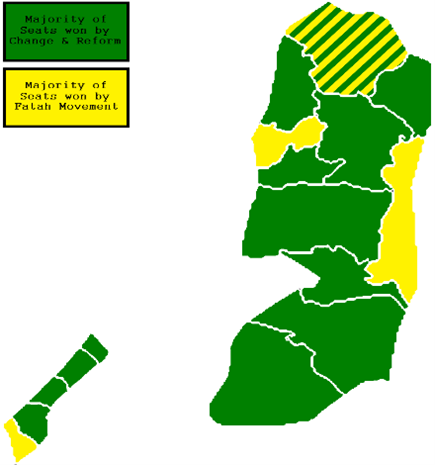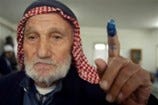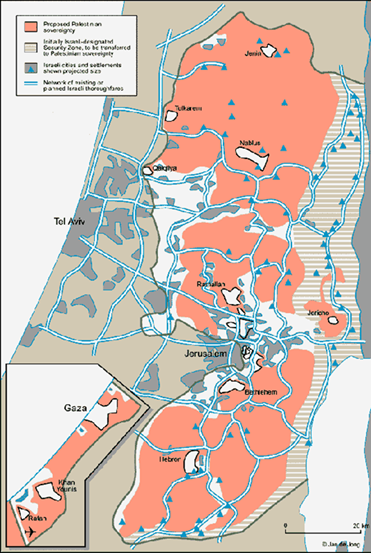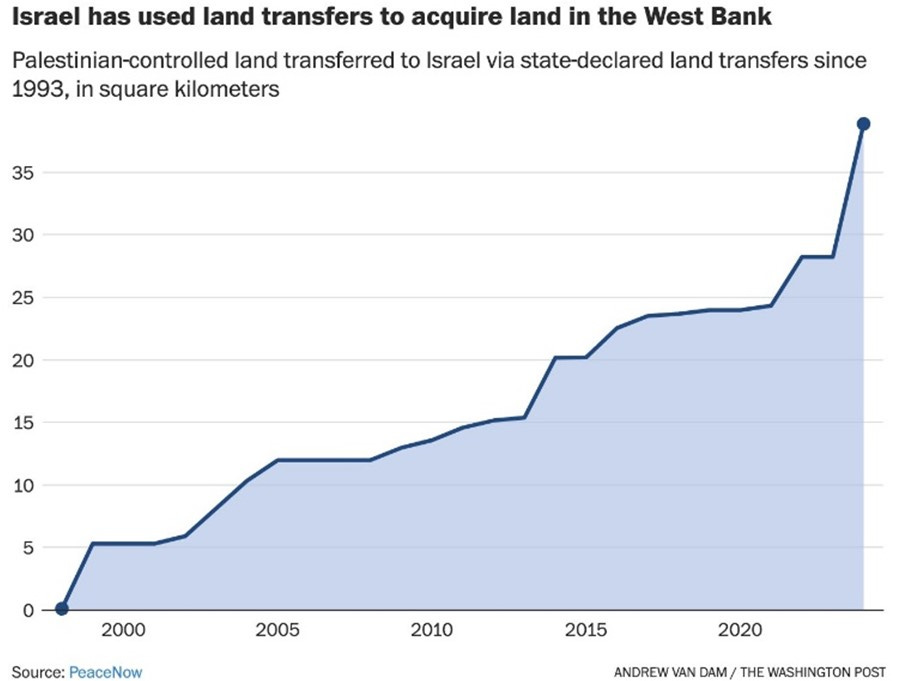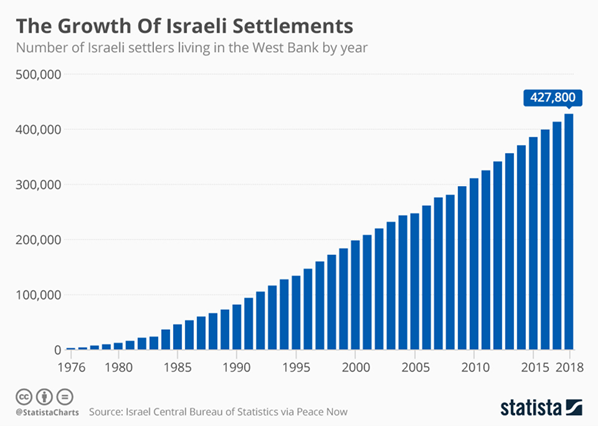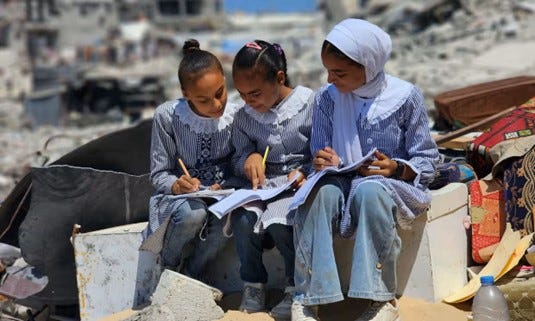Do Palestinians have the right to exist?
“…Last night I saw upon the stair
A little man who wasn’t there
He wasn’t there again today
Oh, how I wish he’d go away”
Antigonish by Hughes Means
It is hard to imagine a crime more heinous than genocide and ethnic cleansing but today the world is witnessing the end stage of a decades long plan to erase Palestine and Palestinians from having ever existed.
As with so many other tragedies involving Muslims and Arabs, the genocide in Gaza is treated without its historical context by the United States political establishment and its stenographers in the corporate media.
Israel’s siege of Gaza is now entering its 18th year. Israel’s reason for imposing a medieval siege on Gaza had nothing to do with stopping Hamas’ terrorism (1) and everything to do with punishing Palestinians for choosing democracy and self-determination over collaboration with their occupier in the last free and fair elections in the Middle East, the Palestinian Legislative Council (PLC) elections of January 2006.
The Palestinian Legislative Council was set up under the Oslo Accords with limited authority over administrative affairs in those parts of the West Bank and Gaza Strip that Israel had agreed to place under the Palestinian Authority (PA) control following the 1993 signing of the Oslo Peace Accords. The first PLC elections was held in 1996. The elections were boycotted by Hamas for being no more than a legitimizing tool for the Oslo Accords. Three years after signing the Accords, it had become increasingly evident that the so called “Peace Process” was undermining Palestinian self-determination by granting Israel, the occupying power, the right to decide the future of the West Bank and Gaza and PA was nothing more than the agent of Israel’s oppression.
The next PLC elections were not held until 2006. The United States was the primary proponent of holding the elections, challenging Hamas to demonstrate its commitment to the democratic process and peace. The results were a complete surprise to the Bush administration. Hamas won a clear majority of the PLC’s seats—76 out of 132, or 58%—reducing Fatah, the late Yassir Arafat's party, to only 45 seats, or 34%. The remaining three seats were won by the Popular Front for the Liberation of Palestine.
Despite Israel’s restrictions on voting in East Jerusalem and Palestinians’ ability to move freely everywhere else, 78% of eligible voters cast ballots.
Both European Union observers and the Carter Center declared the elections free and fair. According to Edward McMillan-Scott, Vice-President of the European Parliament and Chairman of the EP delegation, “The conduct of these elections has provided a model for the wider Arab region and has clearly demonstrated the commitment of the Palestinian people to democracy.”
Video Source
Hillary Clinton would chime in eight months later to chastise Americans for allowing free and fair elections in occupied Palestinian territories:
“I do not think we should have pushed for an election in the Palestinian territories. I think that was a big mistake," she said. “If we were going to push for an election, then we should have made sure that we did something to determine who was going to win.”
Audio Source
In line with the best practices of a mature democracy, the Palestinian prime minister, Ahmed Qureia, and his cabinet resigned, and Palestinian President Mahmoud Abbas asked Hamas to form the next government. Hamas leaders offered a political partnership to Fatah and an extension of the ceasefire with Israel.
Instead of allowing the legitimate representative of Palestinian people to form a government, the U.S., Russia, the EU, and the UN, collectively known as the Quartet, placed three demands on Hamas as conditions for taking office. Hamas was told to (1) renounce violence, (2) recognize Israel’s right to exist, and (3) accept previous PA-Israel agreements. The Quartet members did not demand the same three conditions from Israel, the other party to the conflict and the occupying power with international legal obligations to protect the civil and political rights of the population under its military control, as stipulated in the 4th Geneva Convention.
The very fact that only Hamas was told to abide by the Quartet’s demands—while the other side was not held to similar conditions—was enough to justify Hamas’ rejection of those demands. But let’s set aside ideals such as fairness or reciprocity and consider each demand and Hamas’ reasons for rejecting them separately:
1. Hamas must renounce violence. Between the start of the second Palestinian uprising against Israeli occupation in September 2000 and the end of 2005, more than 4,000 Palestinians had been killed by Israeli military and civilians, while about 1,000 Israelis had been killed by Palestinians. The 4:1 ratio by itself makes it difficult to accept that Israel, a member state of the United Nations, has no legal or moral obligation to also renounce its violence against people living under its rule.
2. Hamas must recognize the right of Israel to exist. There are two fundamental questions that are rarely, if ever, asked: First, shouldn’t recognition be mutual? Second, what are the boundaries within which Israel is to be recognized? Israel’s Basic Law (its constitution) does not specify the boundaries of the state. The generally recognized Israeli boundaries, those following the 1948 war which were implicitly recognized under UN Security Council Resolution 242 that calls for Israel to return to its pre-June 1967 borders, include 50% of what the UN partition plan of 1947 had designated for the Palestinian state. The entire settlement project since 1967 is, in fact, designed to extend Israel’s boundaries to the whole of the Palestine Mandate.
3. Hamas must accept previous PA-Israel agreements. The core of these agreements was the 1993 Oslo Accords. Signed between Israel’s government and Yassir Arafat’s PLO following secret negotiations, it required the PLO to recognize Israel, but Israel only recognized the PLO as the representative of the Palestinians living under its occupation. As implemented, the Accords divided the West Bank into separate enclaves, with the responsibility for security in most of them resting with Israel. The Palestinian Authority (PA), created to implement the terms of the agreement, included security cooperation with Israel and civil administration in the “population centers” IDF had redeployed out of. The transfer of territory to PA control was left to Israel, and in the years to come, it was used to pressure Arafat to clamp down on a restive population that was being systematically killed, injured, and dispossessed by IDF and the Israeli settlers as PA watched impotently. The Accords postponed critical issues such as the future of Israeli settlements, control over water, the status of Jerusalem, and the borders to the so-called “Final Status Negotiations” in 1999. Meanwhile, Israel was free to shape the final status of the occupied territories. As one observer later put it, it was as though Israel would continue eating the pie while negotiating over who would get which slices.
Between 1993 and 2000, Israel built an exclusive network of 200 miles of highways on Palestinian owned land that crisscrossed the West Bank, it reneged on previous agreements (such as the status of Israeli settlers in Hebron), and failed to allow the building of a road connecting Gaza and the West Bank that was foresaw in the Accords. The settler population meanwhile was allowed to double, and the so-called settlement blocks adjacent to Israeli borders continued to grow into the West Bank, extending over water aquifers and thus ensuring Israeli control of most of the West Bank’s water. A permit system and hundreds of checkpoints were created under the guise of preventing Palestinian terrorism, restricting Palestinian movement and pushing them into what Ariel Sharon would later approvingly call “Bantustans”— a reference to the Black “homelands” created by the White apartheid regime in South Africa.
In 2000, Israel rejected negotiations over the final status of the occupied territories as foreseen in the Oslo Accords and its Labor Party Prime Minister, Ehud Barak, presented Yassir Arafat with a “take it or leave it” offer for a Palestinian state. The proposed state would have been made up of five cantons, covering 40% of the West Bank and 60% of Gaza, with Israeli annexed territories cutting deep into the West Bank and separating the different chunks of the “state” from each other. Exclusive Israeli roads and the settlements inside Palestinian cantons would further fragment the Palestinian state into even smaller enclaves. Jerusalem (both West and East) would be the capital of Israel, with limited Palestinian sovereignty over Haram al-Sharif. Israel would control the borders, the settlements, roads that connected the settlements to Israel, the airspace, the magnetic field, and the Jordan Valley. The proposed Palestinian state would be demilitarized and there would be no right of return for Palestinian refugees, except for a token number of 100 thousand with relatives inside Israel. There were no reparations either for billions of dollars in property and bank accounts belonging to more than 750,000 Palestinians who were driven from their homes in 1948-49 and were confiscated by Israel soon thereafter or the land taken from Palestinians on the West Bank and Gaza to either annex into Israel or build settlements or roads on. Not surprisingly, “Barak’s Generous Offer” was rejected by Arafat.
In 2001, Israel canceled the Taba negotiations, which, according to both Israeli and Palestinian participants, had come tantalizingly close to success. Ariel Sharon, the Likud candidate and later prime minister, triggered the second Palestinian uprising by visiting Haram al-Sharif in what he called “the Walk of Ownership” in September 2001. IDF had killed close to 200 Palestinians before the first Palestinian suicide bombing inside Israel. The following year, using the suicide bombings as an excuse, Israel began building a wall inside the West Bank. The wall cut through Palestinian communities, separating farmers from their lands, children from their schools, and people from hospitals. It also placed 11% of the West Bank, including some of its best agricultural land and 250,000 Palestinians, on the Israeli side of the wall. Israel’s military considered the wall to be of no security value since most suicide bombers had traveled into Israel through Israeli checkpoints. Between 2001 and 2006, the settler population and Israel’s land confiscation continued apace with PA unable to stop them.
For Hamas to accept the PA-Israel agreements, therefore, would have amounted to agreeing to become Israel’s new partner and enforcer in continuing dispossession, ghettoization, and violence against Palestinian people.
Following Hamas’ victory, the new PLC was sworn in in February of 2006. Israel responded by withholding all monthly tax and customs receipts it collected for the PA. By now, Palestinian territories heavily depended on these transfers, and the cutoff of funds was intended to cripple the PA and the Palestinian economy. In March 2006, Hamas formed a government without Fatah, which refused to join a Hamas-led coalition. In April the U.S. and the EU announced that all aid to the West Bank and Gaza would be suspended if it went through the PA agencies now controlled by the Hamas-led government. In 2007 the United States, Israel, and Fatah factions loyal to PA president organized a coup against Hamas in Gaza. The coup failed miserably, complete control of Gaza was passed on to Hamas and Israel placed a medieval siege on Gaza with the purpose of keeping Gaza perpetually on the verge of economic collapse. The message of the powerful to the Palestinian people is clear: Palestinians have no civil-political rights, they have no right to their economic, social, and cultural life, and ultimately no right to exist.
(1) The fact that most ceasefires in Gaza have been broken not by Palestinians but rather by Israel and that Israel’s repeated military offensives into Gaza had killed and maimed tens of thousands of Palestinian civilians long before October 2023, if acknowledged at all, is justified by the same baseless argument that Israel is only defending herself against Hamas’ rockets that are “raining” on Israel. Yet according to Israel’s own records “a systematic pattern does exist: it is overwhelmingly Israel, not Palestine, that kills first following a lull. Indeed, it is virtually always Israel that kills first after a lull lasting more than a week.” Nancy Kanwisher, Johannes Haushofer, & Anat Biletzk, Re Igniting Violence, How Do Ceasefires End? Huffington Post, 2009.
“You can cut all the flowers but you cannot keep Spring from coming.” -Pablo Neruda
Top of Form
Bottom of Form



